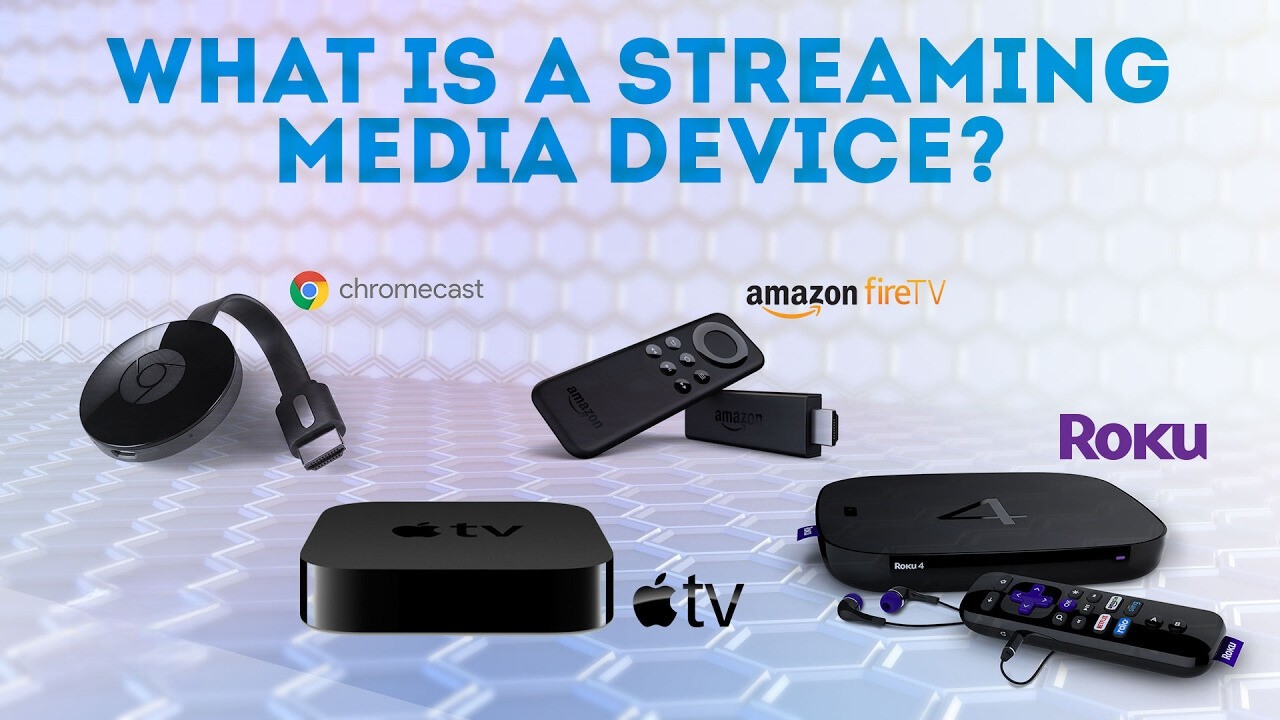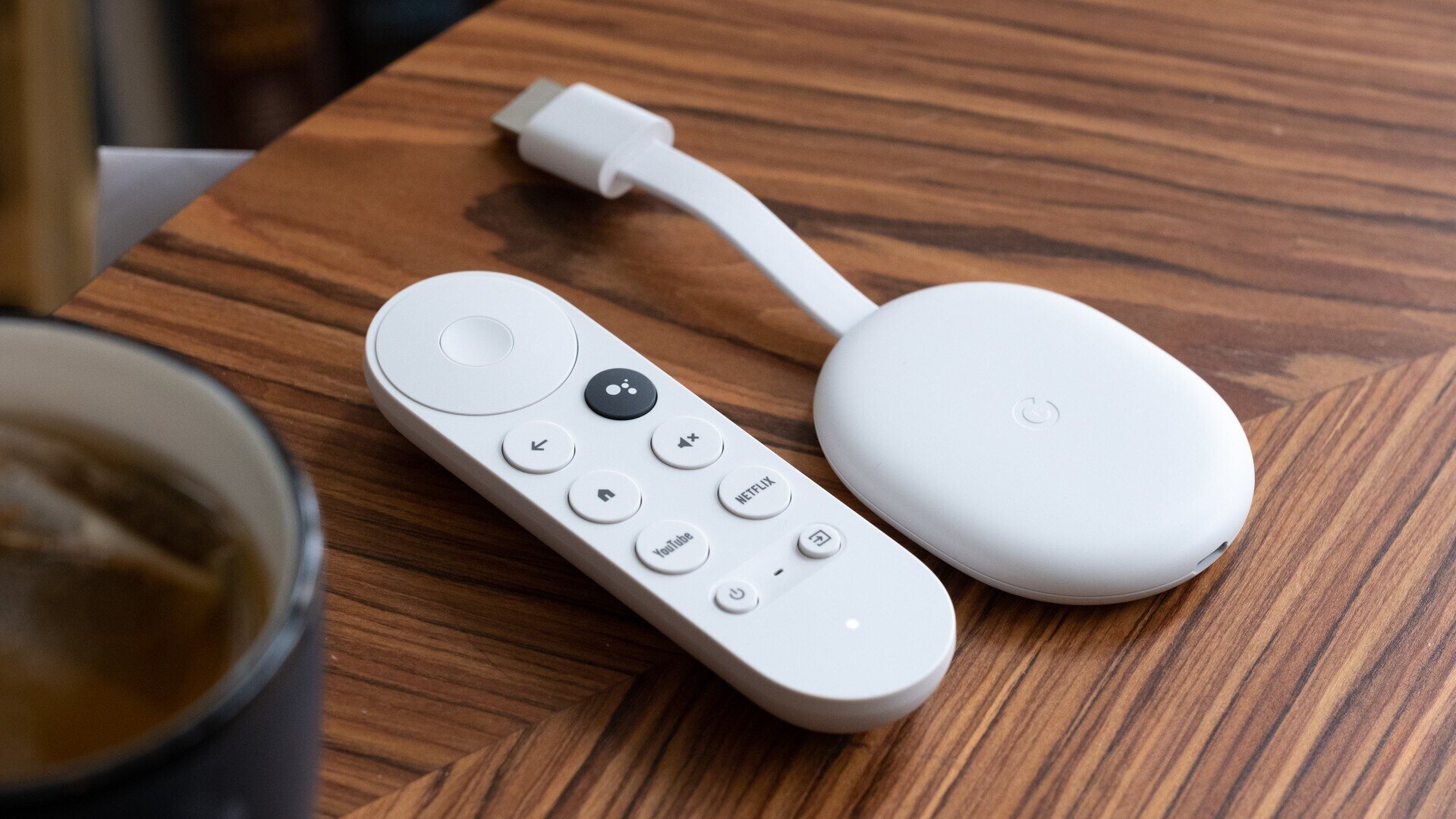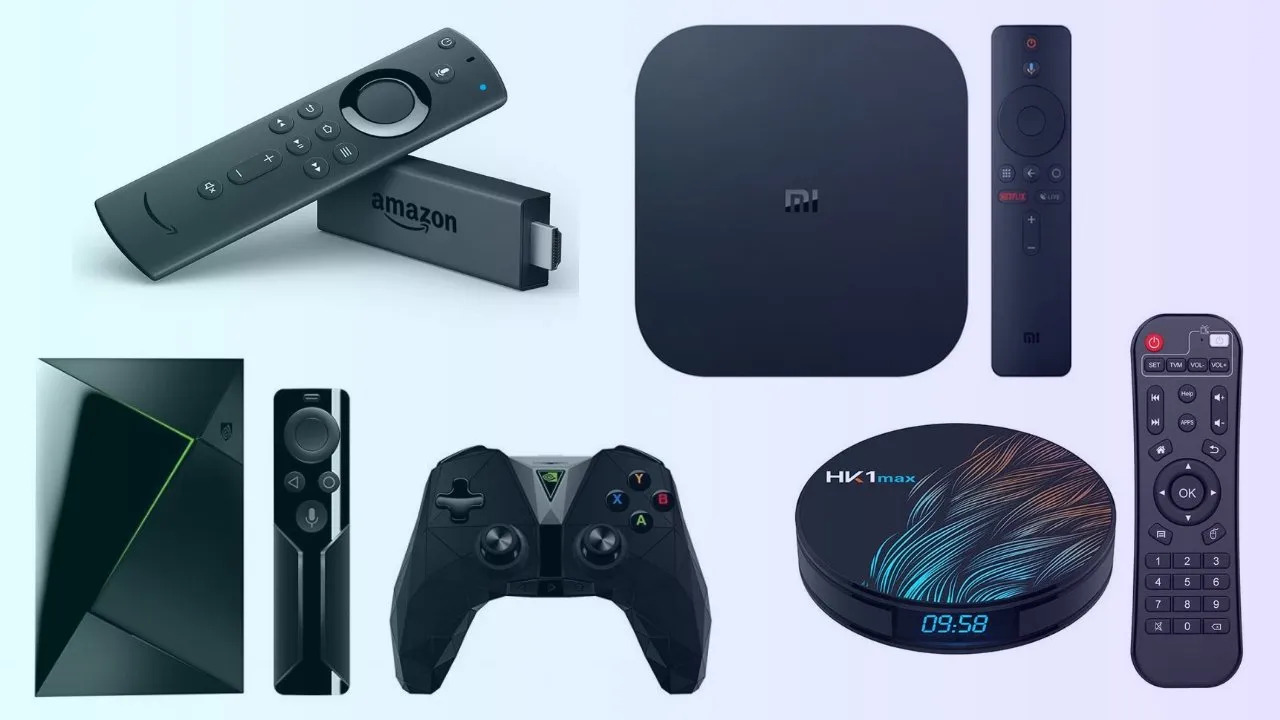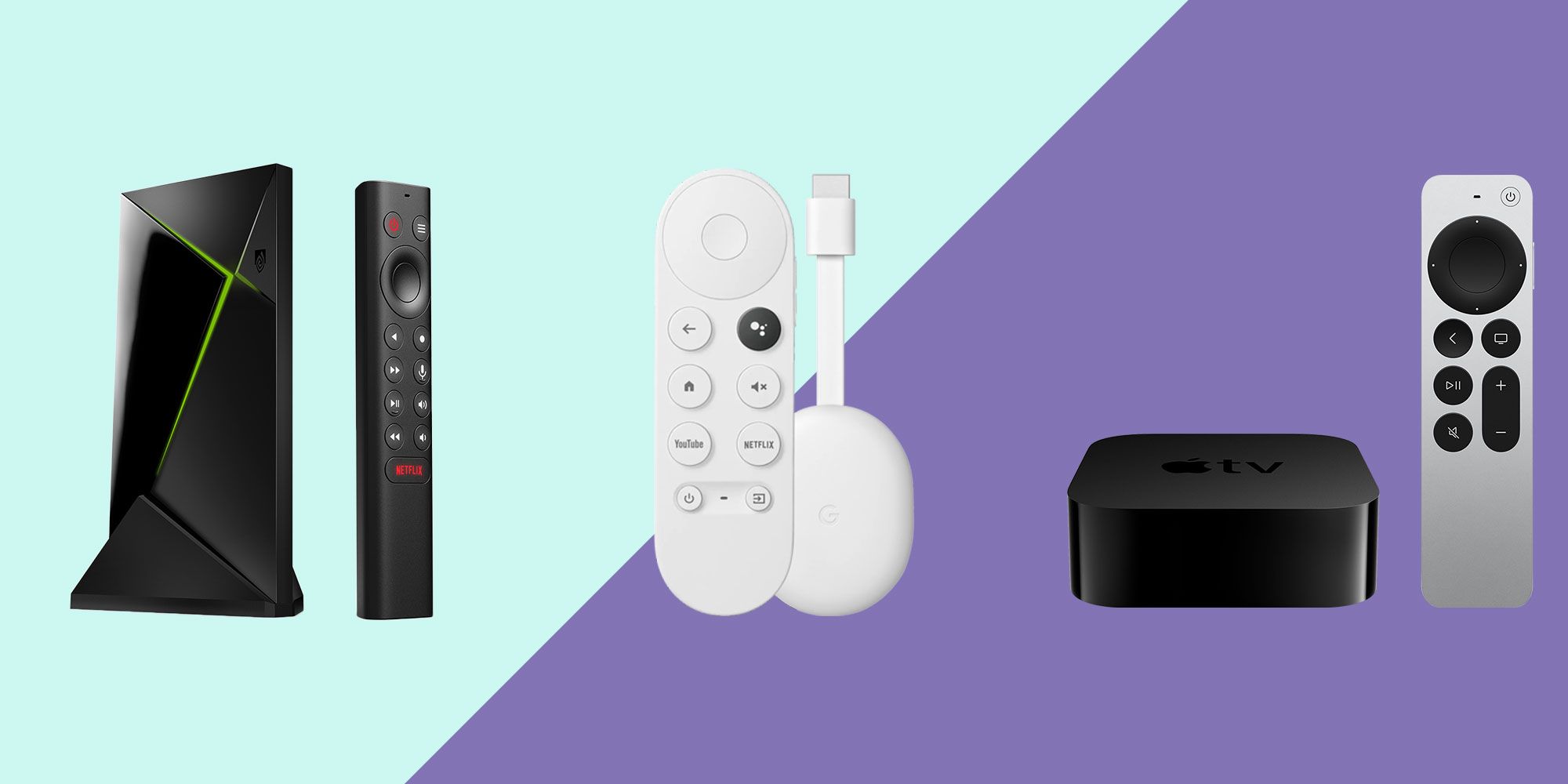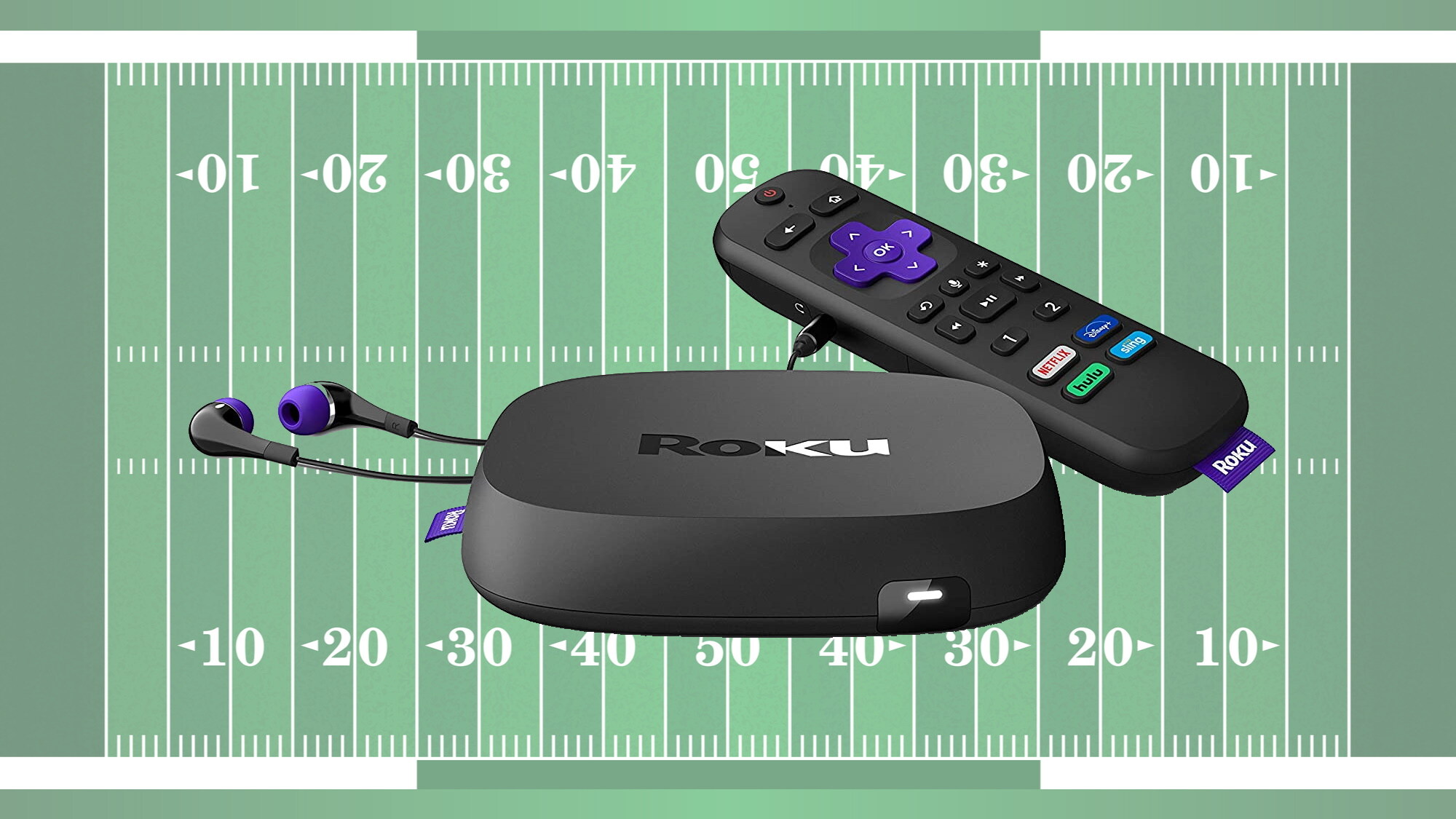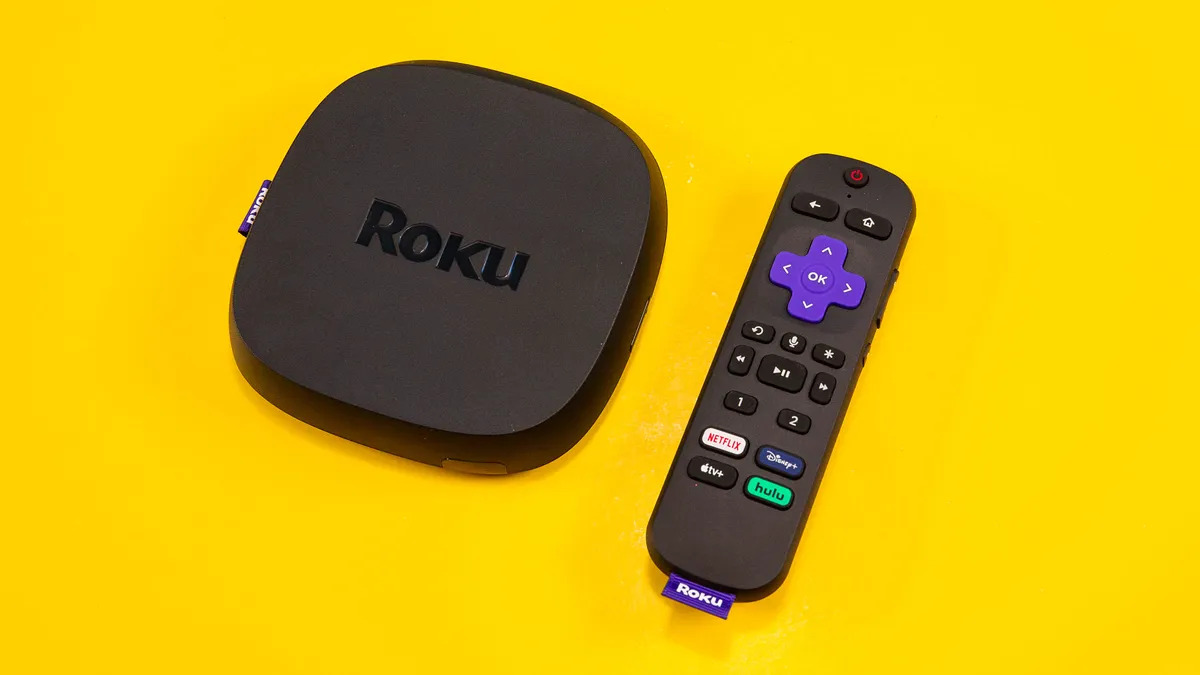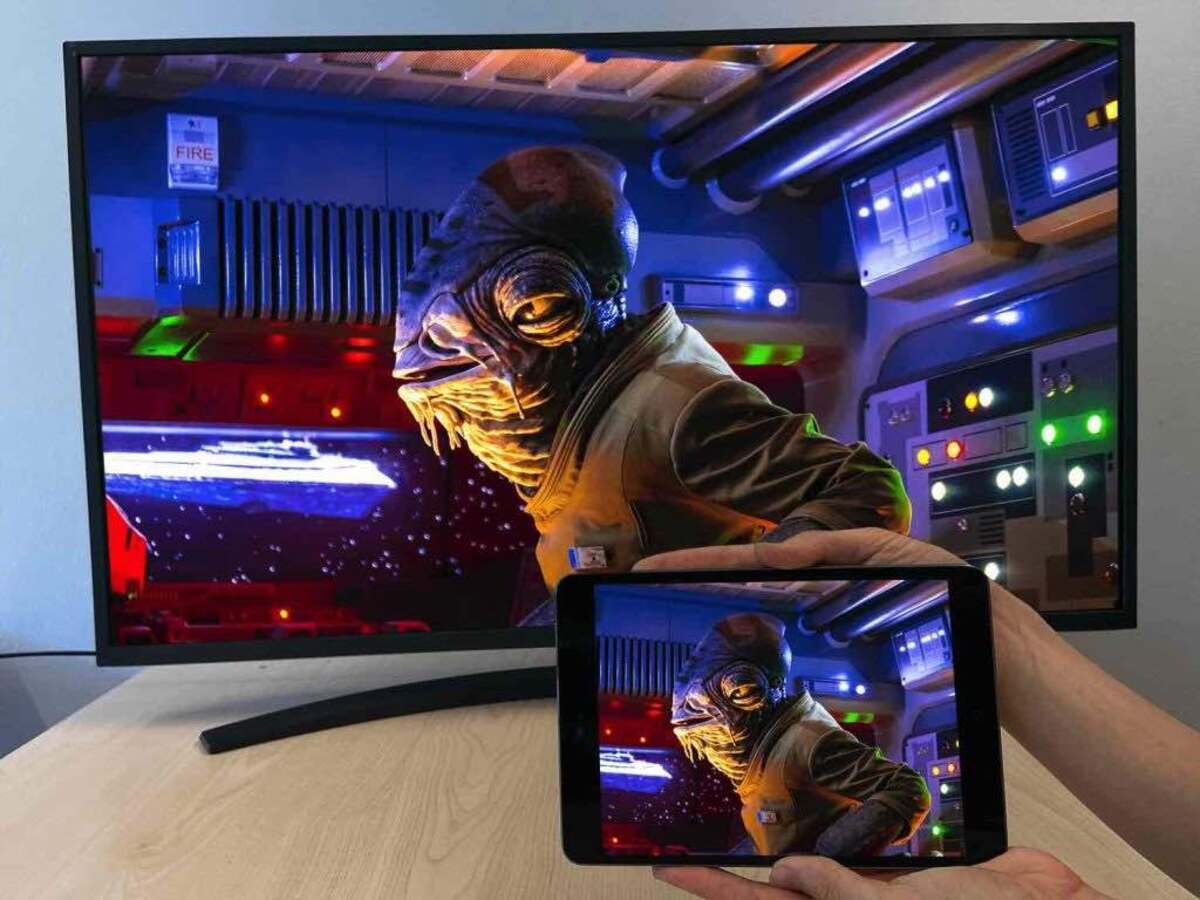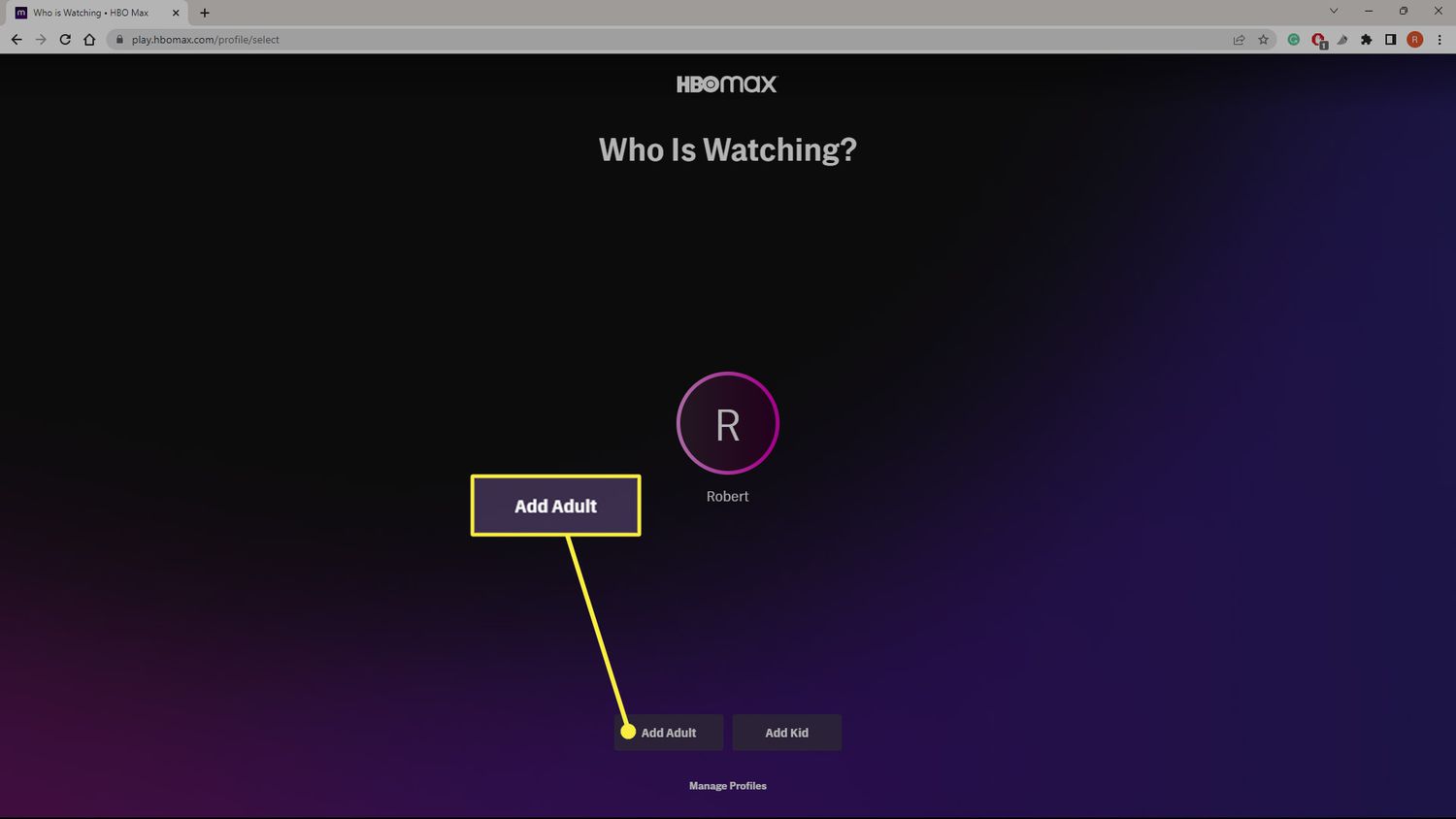Introduction
Welcome to the world of streaming devices, where entertainment and convenience collide. In this fast-paced digital age, streaming devices have revolutionized the way we consume media, allowing us to stream our favorite movies, TV shows, music, and more with just a few clicks. Gone are the days of waiting for content to download or dealing with clunky DVDs; streaming devices offer a seamless and user-friendly way to access a vast array of entertainment options.
But what exactly is a streaming device? How do they work? And why should you consider investing in one? In this article, we will delve into the world of streaming devices, exploring their features, benefits, and the top options available in the market today. Whether you’re a movie buff, TV show fanatic, or music lover, a streaming device can elevate your entertainment experience to a whole new level.
Streaming devices, also known as media or digital players, are compact and portable devices that connect to your television or audio system, allowing you to access a wide range of online content. By using an internet connection, these devices receive and play streaming media, such as movies, TV shows, music, and videos, directly on your screen or speakers.
The rise of streaming services like Netflix, Hulu, Amazon Prime Video, and Spotify has driven the demand for streaming devices. These services offer a vast library of content that can be instantly accessed and streamed through compatible devices. Whether you prefer binge-watching a TV series, discovering new movies, or enjoying your favorite songs, a streaming device is your gateway to a world of virtual entertainment.
Now that we understand what a streaming device is, let’s dive deeper into how these devices work their magic.
What is a streaming device?
A streaming device is a compact and versatile piece of technology that allows you to stream digital media content directly to your television or audio system. It acts as a middleman between the internet and your TV, bringing a world of entertainment right into your living room.
Streaming devices come in various forms, including set-top boxes, streaming sticks, and smart TVs. These devices connect to your home Wi-Fi network and use internet protocols to retrieve and play media content from streaming services or online platforms.
One of the key features of a streaming device is its ability to access a wide range of streaming services. This means you can enjoy popular platforms like Netflix, Hulu, Amazon Prime Video, Disney+, and many more, all from the comfort of your couch. With a streaming device, the possibilities are endless when it comes to choosing what to watch or listen to.
Moreover, streaming devices offer a user-friendly interface that makes navigating through different apps and services a breeze. Most devices come with a remote control or can be controlled through a mobile app, allowing you to easily browse and select your preferred content. Some streaming devices even have voice control capabilities, making the experience even more seamless and convenient.
Another aspect that sets streaming devices apart is their ability to support high-definition (HD) and Ultra High-Definition (UHD) content. Not only can you access a vast library of movies and TV shows, but you can also enjoy them in stunning clarity and detail. This makes streaming devices an excellent choice for those who crave a cinematic experience at home.
Furthermore, streaming devices offer more than just media streaming. They often come with additional features and functionalities, such as gaming capabilities, screen mirroring, and integration with smart home devices. This versatility allows you to make the most out of your streaming device and tailor your entertainment experience to your preferences and needs.
In summary, a streaming device is a revolutionary gadget that elevates your television viewing and audio experience. It allows you to access an extensive range of digital content, from movies and TV shows to music and videos, all through a simple and intuitive interface. With the power of a streaming device, you can transform your living room into a hub of entertainment and immerse yourself in a world of endless possibilities.
How does a streaming device work?
Streaming devices utilize a combination of hardware and software to bring the world of online entertainment to your TV screen or audio system. Let’s explore the inner workings of these devices and understand the technology behind them.
At the core of a streaming device is the hardware, which includes a processor, memory, storage, and connectivity options. These components enable the device to process and transmit media content seamlessly. The processor ensures smooth playback and navigation, while the memory allows the device to store temporary data for faster access. The storage capacity varies depending on the device but is essential for downloading apps and caching content.
Connectivity is a crucial aspect of streaming devices. Most devices come with built-in Wi-Fi capabilities, allowing them to connect wirelessly to your home network. This enables the device to access the internet and stream content from online services. Some streaming devices also offer Ethernet ports for a wired connection, ideal for users who prefer a stable and faster internet connection.
Once the streaming device is connected to the internet, it uses software or operating systems specially designed for streaming purposes. These systems provide an intuitive user interface that allows you to navigate through different apps and services seamlessly. Popular streaming device operating systems include Roku OS, Amazon Fire TV OS, Android TV, and Apple tvOS.
Streaming devices usually come with a dedicated remote control or can be controlled through a mobile app. These controls enable you to browse through various apps, select content, adjust settings, and even use voice commands. Some streaming devices also support casting or screen mirroring, allowing you to stream content from your smartphone or tablet directly to your TV screen.
When it comes to streaming content, the device acts as a gateway between the streaming service and your TV. It uses internet protocols, such as HTTP or RTSP, to communicate with the streaming service’s servers and retrieve the requested media content. The device then decodes the content and sends it to your TV or audio system for playback.
It is worth noting that streaming devices prioritize online streaming over downloading content. Instead of downloading media files to store locally, streaming devices rely on a continuous data stream. This means that you can start watching a movie or listening to music almost instantly, without waiting for the entire file to download.
Overall, streaming devices combine high-quality hardware, user-friendly software, and seamless connectivity to deliver a smooth and immersive streaming experience. They bridge the gap between the internet and your TV, allowing you to access a vast array of digital content and enjoy it in the comfort of your home.
Benefits of using a streaming device
Streaming devices offer numerous benefits that enhance the way we consume media and entertainment. Let’s explore some of the key advantages of using a streaming device:
- Wide variety of content: One of the biggest advantages of streaming devices is the access they provide to a vast library of content. Whether you’re a fan of movies, TV shows, documentaries, or music, streaming devices give you unlimited options to choose from. You can explore popular streaming services like Netflix, Hulu, and Amazon Prime Video, as well as niche platforms that cater to specific interests.
- Convenience and instant access: With a streaming device, gone are the days of waiting for content to download or sifting through shelves of DVDs. You can instantly access your favorite shows and movies at the touch of a button. Streaming devices also offer personalized recommendations based on your viewing habits, making it even easier to discover new content suited to your taste.
- Flexibility and portability: Streaming devices are compact and portable, allowing you to enjoy your favorite content wherever you go. Whether you’re streaming in the living room, bedroom, or even while traveling, streaming devices give you the freedom to take your entertainment on the road. Many devices also offer the option to sync your viewing progress across multiple devices, ensuring a seamless experience.
- Cost-effective entertainment: Streaming devices offer an affordable alternative to traditional cable or satellite subscriptions. While some streaming services require a monthly subscription fee, the cost is often significantly lower than a cable package. Additionally, many streaming devices offer free access to a range of ad-supported content, giving you a wide selection of movies, TV shows, and music without any extra cost.
- High-definition and 4K streaming: Streaming devices support high-definition (HD) and even Ultra High-Definition (UHD or 4K) streaming, providing a stunning visual experience. If you have a compatible TV, you can enjoy your favorite content in crystal-clear quality, with vibrant colors and sharp details. This is particularly beneficial for movie enthusiasts and sports fans who crave a cinematic viewing experience.
- Additional features and integration: Many streaming devices go beyond media streaming and offer additional features like gaming capabilities, screen mirroring, and integration with smart home devices. This allows you to expand the functionality of your streaming device and make it a central hub for all your entertainment needs. From streaming your favorite games to controlling your smart lights, the possibilities are endless.
In summary, streaming devices provide a convenient, cost-effective, and feature-rich way to enjoy a vast array of digital content. Whether you want access to popular streaming services, flexibility in where and how you watch, or a high-definition viewing experience, a streaming device is a must-have for any entertainment enthusiast.
Popular streaming devices on the market
There are several streaming devices available on the market, each offering unique features and functionalities to enhance your entertainment experience. Let’s take a look at some of the most popular streaming devices:
- Roku: Roku devices are known for their vast content library and user-friendly interface. They offer a wide range of streaming options, including popular services like Netflix, Hulu, and Disney+. Roku devices come in various forms, from compact streaming sticks to powerful set-top boxes, catering to different preferences and budgets. Additionally, Roku devices support 4K streaming and HDR, providing an immersive viewing experience.
- Amazon Fire TV: Amazon Fire TV devices, including the Fire TV Stick and Fire TV Cube, provide seamless integration with Amazon’s vast ecosystem of services, including Prime Video, Alexa voice control, and access to a wide selection of apps and games. These devices also support 4K streaming and HDR, delivering stunning visual quality.
- Apple TV: Apple TV devices offer a premium streaming experience with their sleek design and seamless integration with the Apple ecosystem. Not only do they provide access to popular streaming services, but they also offer features like AirPlay for screen mirroring and the option to play games. Additionally, Apple TV supports 4K streaming and HDR for a cinematic viewing experience.
- Google Chromecast: Google Chromecast devices are unique in that they rely on “casting” content from your smartphone, tablet, or computer to your TV. Simply select the content on your device and cast it to your TV for playback. This device offers flexibility and portability and allows you to control playback from your device. Chromecast devices support 4K streaming and offer access to various streaming services.
- NVIDIA Shield TV: The NVIDIA Shield TV is a powerful streaming device that caters to both media streaming and gaming enthusiasts. It offers 4K HDR streaming, access to popular streaming services, and the ability to download and play Android games. The device also supports Chromecast, making it easy to cast content from your devices to your TV.
These are just a few examples of popular streaming devices on the market. Other notable mentions include Sony PlayStation, Xbox One, and Smart TVs from brands like Samsung, LG, and Sony, which often come with built-in streaming capabilities.
When choosing a streaming device, it’s essential to consider factors such as your viewing preferences, budget, and the content and services you want to access. Each device offers its own unique combination of features and interfaces, so finding the one that aligns with your needs will ensure you have the best streaming experience.
Considerations before purchasing a streaming device
Before diving into the world of streaming devices, it’s important to consider a few key factors to ensure you choose the right device for your needs. Let’s explore some essential considerations before purchasing a streaming device:
- Content availability: The first consideration is the availability of the streaming services and content you want to access. Different streaming devices may have varying compatibility with popular streaming services. Ensure that the device you choose supports the streaming platforms and apps you use regularly.
- Streaming quality: If you have a 4K Ultra HD TV or a desire for the highest quality streaming experience, make sure the streaming device you choose supports 4K streaming and HDR content. This will ensure you can enjoy crystal-clear visuals and vibrant colors.
- User interface and ease of use: Consider the user interface of the streaming device and how easy it is to navigate through different apps and settings. Look for a device that offers a simple and intuitive interface, making it easy for you to find and enjoy your favorite content.
- Performance and processing power: Pay attention to the device’s hardware specifications, including the processor, memory, and storage capacity. A more powerful device will provide a smoother and lag-free streaming experience, especially when handling demanding tasks like 4K streaming or gaming.
- Remote control or mobile app: Consider whether you prefer a physical remote control or if you are comfortable using a mobile app to control the streaming device. Some devices offer voice control capabilities, which can enhance the ease of use and convenience.
- Additional features: If you’re looking for more than just media streaming, consider the additional features that certain streaming devices offer. This could include gaming capabilities, integration with smart home devices, or the ability to mirror your smartphone or tablet screen on your TV.
- Price and budget: Set a budget for your streaming device purchase and consider the value for money provided by different devices. While there are affordable options available, keep in mind that higher-end devices with advanced features may cost more.
- Compatibility with other devices: If you already own other smart devices or have a specific ecosystem (such as Amazon Alexa or Google Home), consider a streaming device that seamlessly integrates with your existing devices and ecosystem.
By taking these considerations into account, you’ll be able to make an informed decision and choose a streaming device that meets your needs and enhances your entertainment experience.
Conclusion
Streaming devices have revolutionized the way we consume media and entertainment, bringing a world of content right to our fingertips. Whether you’re a movie enthusiast, a TV show fanatic, or a music lover, these devices offer a convenient and immersive way to access and enjoy a wide variety of digital content.
In this article, we explored the concept of streaming devices and how they work. We discussed their ability to connect to the internet, retrieve streaming media content, and play it on your TV or audio system. Streaming devices provide a user-friendly interface, support high-definition and 4K streaming, and often come with additional features like gaming capabilities and integration with smart home devices.
We also delved into the benefits of using a streaming device. These devices offer access to a vast range of content, provide convenience and instant access, and offer cost-effective entertainment options. Additionally, streaming devices allow for flexibility and portability, enabling you to enjoy your preferred content wherever you go.
When considering which streaming device to purchase, it’s important to keep your specific needs and preferences in mind. Factors such as content availability, streaming quality, user interface, and additional features should all be taken into consideration. By carefully evaluating these factors, you can choose a streaming device that perfectly suits your entertainment requirements.
Whether you opt for popular options like Roku, Amazon Fire TV, or Apple TV, or choose to explore other devices, a streaming device can enhance your entertainment experience by providing a wide range of content and convenient access to it.
So, why wait? Invest in a streaming device today, and unlock a world of entertainment possibilities right from the comfort of your own home. Whether you’re relaxing after a long day or enjoying a movie night with loved ones, a streaming device will be your gateway to endless hours of entertainment and enjoyment.
Get ready to stream, relax, and immerse yourself in the world of digital entertainment!







